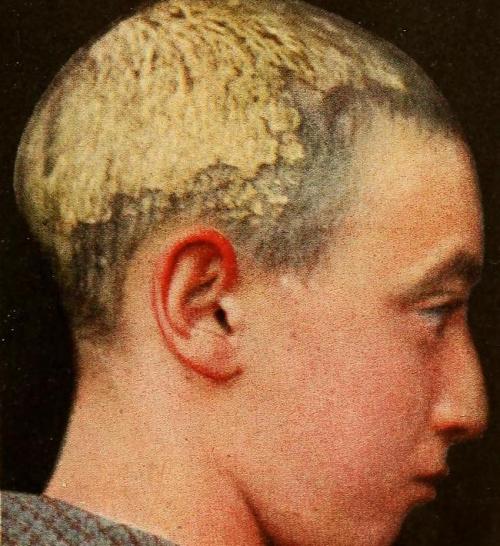biomedicalephemera: Favus of the Scalp and Body Favus (or favid), from the Latin favus, means &ldquo
biomedicalephemera: Favus of the Scalp and Body Favus (or favid), from the Latin favus, means “honeycomb”, and is a dermatological infection by the fungus Trichophyton schoenleinii. This was the first disease that had a fungus recognized as its cause. In 1839, J. L. Schonlein described the spore and mycelia of the causative organism. This predates the earliest isolation of infectious bacteria by several decades, but its early discovery did not do much to prevent or treat infections. In fact, despite the knowledge of the condition and its cause, it was frequently mistaken for Hansen’s disease (leprosy) until the early 1900s, and many Europeans who were given incorrect diagnoses were committed to leper colonies or leprosaria (the leprosy equivalent of a sanitarium). In the modern world, griseofulvin, an anti-fungal discovered in 1939, kills the favus fungus so easily that the condition is almost unheard of, outside of inaccessible and extremely impoverished communities. Diseases of the Skin, Their Pathology and Treatment. Dr. Milton B. Hartzell, 1919. -- source link
Tumblr Blog : biomedicalephemera.tumblr.com

